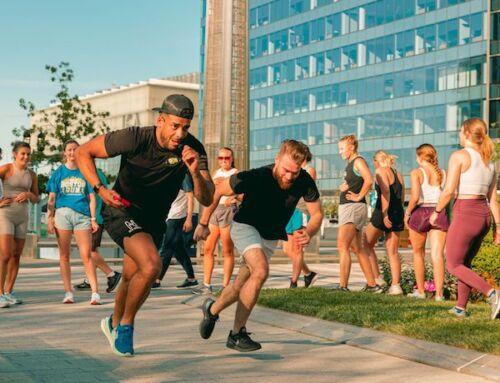With blue skies above and the sun in sky, many people lace up their sneakers and hit the road in Southie for a run! But before you go full force, there are some important things you should know! We recently sat down with Dr. Matthew Salzler, MD from Tufts Medical Center and talked about not only the benefits of running but some preventative measures to keep you safe!
What are the benefits of running?
The overall cardiac benefits of running (and other cardiovascular exercise) are huge. The more you use your heart muscle, the stronger and healthier it becomes. Running certainly isn’t without its risks – long distance runners have injury rates of 20-80% per year. However, most of these injuries are from overuse – not traumatic injuries. I’d argue that one heart attack is far worse than 10 bouts of tendonitis. On the whole, running is very healthy for people who have no major injuries that inhibit them from normal movement.
What are some injuries from running that people should be aware of?
The most common injuries are different types of tendonitis tendonitis, and the most concerning are stress fractures.
If you begin to feel pain down your shin bone (tibia) as you increase your distance or the intensity of running, your initial conclusion would likely be that it is shin splints. However, a tibial stress fracture is also a common occurrence – and would present with similar pain. A stress fracture is a crack in your bone that is caused by repetitive stress such as running. If you’ve never had shin splints or a stress fracture before, and you have new pain while you’re walking after a run and cool down, you should see a doctor to make sure it’s not serious. When left untreated, stress fractures can develop into a much worse displaced fracture (when the fracture goes completely through the bone) – a much bigger problem.
Tendonitis is not dangerous but can be incredibly painful. Tendinitis is inflammation of the tendons – or the cords that attach muscle to bone. This type of inflammation can cause pain and tenderness around your joints. As with shin splints and stress fractures, if you have new pain, it’s good to check with a doctor. But if you’re confident that the pain you’re feeling is tendonitis, treat it with rest, ice, stretching and strengthening of the surrounding muscles.
Surprisingly, the most dangerous running injury is injury to the hip. If running causes a pain in your groin (where your hip joint is, not the outside of your upper leg), you should be seen by a doctor as soon as possible. Your hip is a weight bearing joint and plays a huge part in your movement. Significant pain that is ignored could lead to a hip fracture.
What are some simple tips to keep you healthy while you run?
Stretching
There’s a variety of information out there about the benefits of stretching before and after running. You certainly don’t have to stretch before or after a run, but being flexible in general is good for your muscular health. If you are going to stretch, consider stretching after a run when your muscles are warmed up. I like to stretch for 5-10 minutes before and after a run, focusing on my hamstrings, glutes, quads, hip external rotators and calves. Find stretches you like and that work for you – focusing on muscle areas that tend to tighten for you.
Strengthening
You can work to prevent injuries through strengthening your muscles. When you run, you build up strength in your quadriceps more than in the other muscle groups of your legs. You end up imbalanced, which can result in injury. Work on building up your glutes and hamstrings. Squats with good form are a simple exercise that can accomplish this.
Footwear
Footwear in itself is not going to make you injury free or less prone to injury. However, you should wear a pair of running shoes that fits correctly and is comfortable. Make sure they’re the correct size – a too big or small shoe will be uncomfortable and you’ll adjust for that in your run, potentially hurting yourself.
Don’t make dramatic changes to your footwear. For example, if you’re interested in moving towards minimalist footwear, be sure to transition gradually (there are instructions out there on how to make this transition) to prevent injury.
Get a running buddy
If you’re going to be running more than 10 miles a week, you should find a running coach or a club to join. It’s helpful to have the companionship of experienced runners as you increase mileage. In addition, questions will come up, and you’ll get bumps and bruises – a group of runners at different levels of experience can help you figure out what’s normal and what’s not, and can guide you through your runs.
If you run with a friend, you’ll both get exercise and quality time together out of it. Your health improves and so will your happiness. In addition, the quality of your exercise tends to improve.
So are you ready to run? Check out these Southie running routes for all levels of runners!
The content provided in this post is intended solely for the information of the reader. This information is not medical advice and should not replace a consultation with a medical professional. Please call our Sports Medicine Program at 617-545-5352 to make an appointment with a physician if you’d like more information.





Dr. Salzler is the best. I was a pretty active person, running and skiing etc until I started having knee pain. Went on for 4 years until I saw him. Within a month I had surgery, followed all his instructions, and within a short time I was skiing and did my first St. Patricks Boys and Girls Club road race this year again. He really knows his stuff! Castle Island is a pleasure to run now not a painful task!